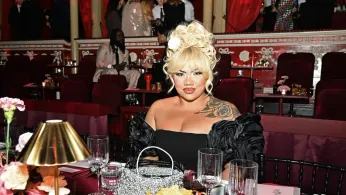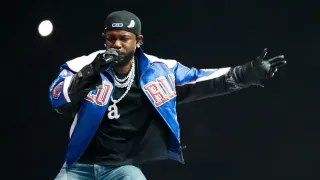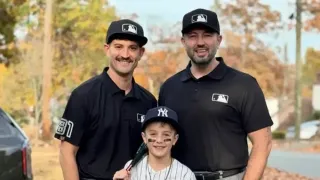
Nov 2
Mayhem, Couture, and Kitty Litter: How Parris Goebel and Lady Gaga Queered the Stage for a New Generation
READ TIME: 4 MIN.
When it comes to modern pop, few artists or creators command the power to transform a stage into a kaleidoscopic universe quite like Lady Gaga and Parris Goebel. Their collaboration on the ongoing Mayhem Ball Tour is not just a testament to pop spectacle; it’s a celebration of queer creativity, chosen family, and the boundary-pushing spirit at the heart of LGBTQ+ culture. For the millions who have found home and hope in Gaga’s world, seeing Goebel’s fingerprints all over her latest tour is a reminder: the stage is not just a platform, it’s a sanctuary—one where queer brilliance reigns.
Goebel, whose own career has been marked by audacious movement and unapologetic self-expression, spoke about the show’s genesis as “a theatrical opera that would immediately establish the show’s grand scale.” Her first vision for Gaga? “Big, gorgeous gowns and the drama of it, which evolved into the idea of a colossal cage-like dress containing dancers inside the skirt.” Not only is this couture fantasy a literal elevation of the artist, but it’s also a metaphor for the many ways queer people have reclaimed spaces once meant to confine—and turned them into runways, ballrooms, and safe havens.
The Mayhem Ball’s main set piece—a Colosseum-like opera house—hosts an explosion of couture-inspired looks, with Gaga’s wardrobe serving not just as spectacle, but as storytelling. In the show’s opening, the aforementioned cage-dress is both armor and invitation: Gaga is elevated, yes, but through a structure teeming with life and movement beneath her. Goebel described this as “a mic drop moment,” one that instantly resonated with LGBTQ+ fans who know what it means to step out in full regalia, claiming space and visibility.
In the world of queer nightlife and performance, clothing has always been more than fabric—it’s armor, it’s signal, it’s a dare to the world: see me, and know I am here. Gaga and Goebel’s approach flips high fashion’s exclusivity, transforming it into a shared language onstage. Every costume change becomes a form of camp storytelling, with drama, wit, and a wink to the ballroom tradition of “category is: living my truth.”
Goebel’s choreography doesn’t just move bodies; it moves stories—often, stories of loss and resurrection that feel achingly familiar to LGBTQ+ audiences. One of the tour’s most talked-about moments is a reimagined “Paparazzi,” set as a slow, emotional ballad. Here, Gaga emerges from a sandbox—representing a grave—her cape unfurling as she rises, a visual metaphor for rebirth and transformation. As Goebel explains, “It symbolized her soaring and finding her wings again”.
If you’re queer, you know that story: the world may try to bury you, but you rise, battered and dazzling, ready to fly. The use of something as mundane as kitty litter in the sandbox is a sly, loving nod to the DIY spirit of queer communities—the way we’ve always found ways to build beauty and meaning from whatever materials are at hand.
The Mayhem Ball is, at its core, an exploration of duality—death and rebirth, chaos and order, public persona and private truth. For “Poker Face,” Goebel brought in a chessboard motif, staging a push-pull between Gaga and another version of herself. “Everyone knows how to play chess,” Goebel said, “and putting that in her emotional storyline was really cool and powerful.” If there’s a more universal queer metaphor than the constant strategizing and code-switching demanded by heteronormative society, we haven’t found it yet.
These performances aren’t just choreography—they’re living, breathing allegories for the queer experience. The tour’s very structure, divided into acts and rooted in operatic drama, feels like a love letter to the pageantry, resilience, and transformative artistry that have always thrived in LGBTQ+ spaces—from the drag balls of Harlem to the street parades of Pride.
With 87 shows across Asia, Europe, North America, and Oceania, the Mayhem Ball isn’t just a concert—it’s an international celebration of difference and defiance. Critical acclaim has been overwhelming, with the tour’s North American leg grossing over $103 million from 27 shows, making it Gaga’s highest-grossing run in a single territory, according to *Billboard* projections. Critics have hailed the spectacle as “the show of the year,” but for queer fans, it’s something more: a night where the rules are rewritten, and every outsider gets to be the center of the story.
For Parris Goebel, whose roots in hip hop and street dance have always been about claiming space, working with Gaga on this scale is more than a career milestone—it’s a cultural statement. The Mayhem Ball is a reminder that the ballroom is everywhere: in arenas, on screens, in the hearts of anyone who’s ever been told they’re too much. The partnership between Goebel and Gaga is a testament to the power of queer collaboration, where every detail—from a couture cage dress to a sandbox rebirth—is a manifesto of survival and celebration.
As queer audiences continue to fill stadiums around the world, Gaga and Goebel’s Mayhem Ball offers a spectacular, affirming vision: We are here. We are resilient. And we are, in every sense of the word, unstoppable.






